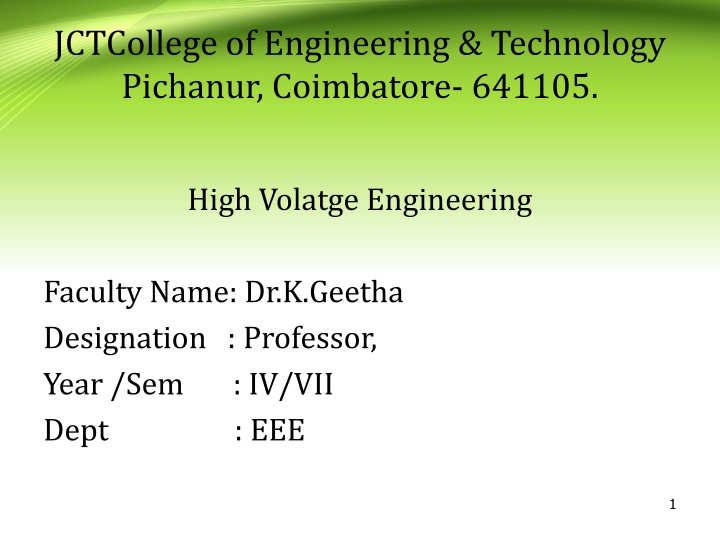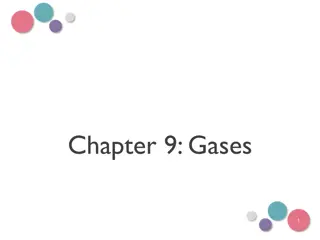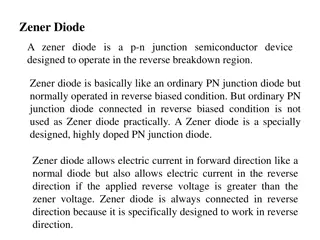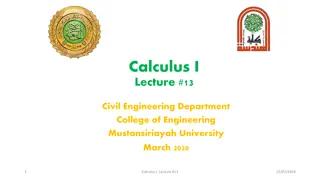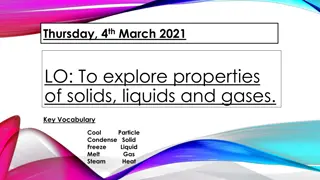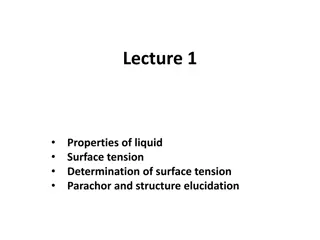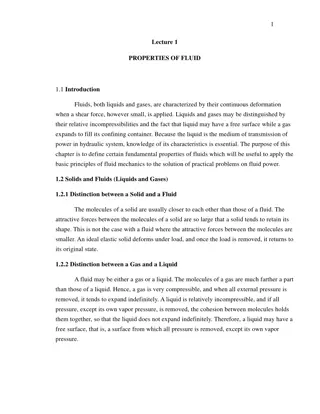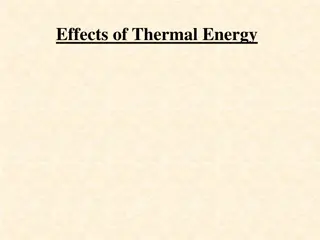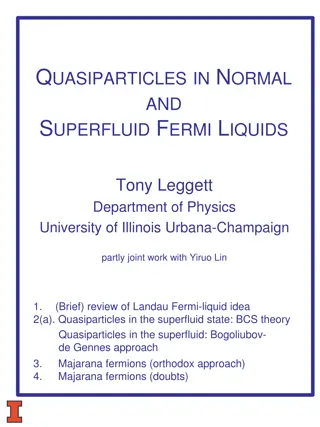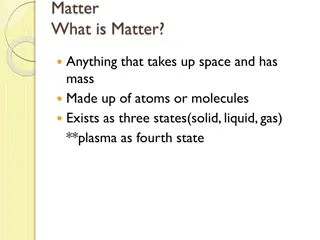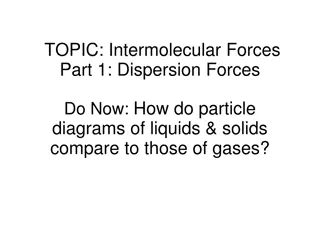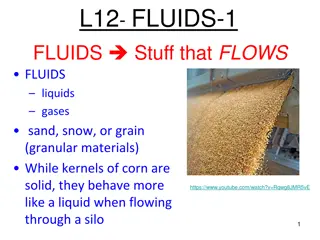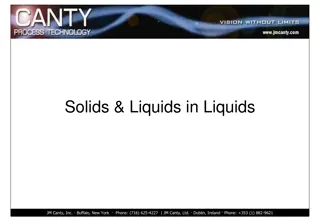Electrical Breakdown in Gases, Solids, and Liquids: Understanding the Phenomenon
Exploring the intricate dynamics of electrical breakdown in various mediums such as gases, solids, and liquids. From the criteria for breakdown in gases to factors affecting breakdown strength in liquid dielectrics, this study delves into the mechanisms, equations, and practical implications of these phenomena, shedding light on the complexities surrounding electrical breakdown.
Download Presentation

Please find below an Image/Link to download the presentation.
The content on the website is provided AS IS for your information and personal use only. It may not be sold, licensed, or shared on other websites without obtaining consent from the author.If you encounter any issues during the download, it is possible that the publisher has removed the file from their server.
You are allowed to download the files provided on this website for personal or commercial use, subject to the condition that they are used lawfully. All files are the property of their respective owners.
The content on the website is provided AS IS for your information and personal use only. It may not be sold, licensed, or shared on other websites without obtaining consent from the author.
E N D
Presentation Transcript
JCTCollege of Engineering & Technology Pichanur, Coimbatore- 641105. High Volatge Engineering Faculty Name: Dr.K.Geetha Designation : Professor, Year /Sem : IV/VII Dept : EEE 1
UNIT - II ELECTRICAL BREAKDOWN IN GASES, SOLIDS AND LIQUIDS.
GASEOUS BREAKDOWN IN UNIFORM FIELDS In uniform fields, the Townsend's criterion for breakdown in electropositive gases is given by the following equation, where the coefficients and are functions of E/p and are given as follows 3
GASEOUS BREAKDOWN IN UNIFORM FIELDS where E0 is the applied electric field, and p the gas pressure. In a uniform field electrode system of gap distance d, Ub is the breakdown voltage and Eb the corresponding field intensity. Eb is equal to the electric strength of the dielectric under given conditions. When the applied field intensity E0 = Eb 4
GASEOUS BREAKDOWN IN UNIFORM FIELDS 5
BREAKDOWN IN LIQUID DIELECTRICS A very large number of external factors affect the breakdown strength of liquid dielectrics. For example, electrode configuration, their material, size and surface finish, the type of voltage, its period of application and magnitude, the temperature, pressure, purification of the liquid and its ageing condition. , 6
BREAKDOWN IN LIQUID DIELECTRICS Dissolved water, gas or the presence of any other form of contamination and sludge also affect the breakdown strength considerably. It is, therefore, not possible to describe the breakdown mechanism by a single theoretical analysis which may take into account all known observed factors affecting the breakdown. , 7
CORONA DISCHARGE The field is non-uniform, an increase in voltage will first cause a discharge in the gas to appear at points with highest electric field intensity, namely at sharp points or where the electrodes are curved or on transmission lines. This form of discharge is called a corona discharge and can be observed as a bluish luminescence. 8
CORONA DISCHARGE This is accompanied by a hissing noise. The air surrounding the corona region becomes converted into ozone. It is responsible for considerable loss of power from high voltage transmission lines, It leads to the deterioration of insulation due to the combined action of the bombardment of ions and of the chemical compounds formed during discharges. It also gives rise to radio interference. 9
BREAKDOWN IN NON-UNIFORM FIELDS The breakdown voltages were also observed to depend on humidity in air. In rod gaps the fields are non-uniform. In the case of sphere gaps the field is uniform In sphere gaps, the breakdo0wn voltage do not depend on humidity and are also independent of the voltage waveform The formative time lag is quite small (~0.5 s) even with 5% over-voltage. 10
VACUUM BREAKDOWN It can be broadly divided into following categories Particle exchange mechanism. Field emission mechanism. Clump theory 11
CONDUCTION & BREAKDOWN IN COMMERCIAL LIQUIDS Suspended particle mechanism Cavitation and bubble mechanism Stressed oil volume mechanism Thermal mechanism of breakdown 12
BREAKDOWN IN SOLID DIELECTRICS Chemical & electrochemical deterioration & breakdown Breakdown due to treeing and tracking Breakdown due to internal discharges 13
BREAKDOWN IN COMPOSITE DIELECTRICS Mechanism of breakdown in composite dielectric 1. Short-term breakdown 2. Long-term breakdown 14
CONDUCTION & BREAKDOWN IN PURE LIQUIDS Low electric fields less than 1 kV/cm are applied, conductivities of 10-18 10-20 mho/cm are obtained. These are due to impurities remaining after purification When the fields are high the currents not only increase rapidly. 15
